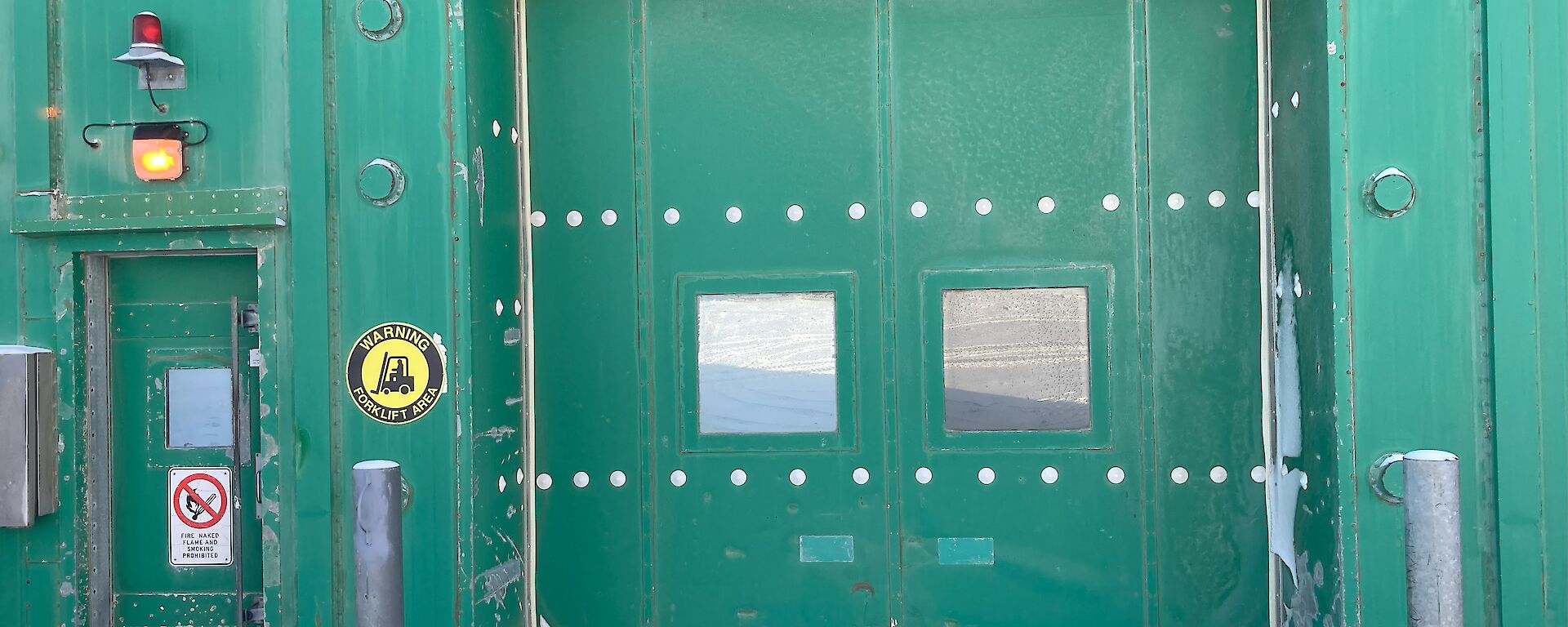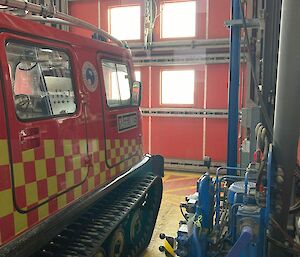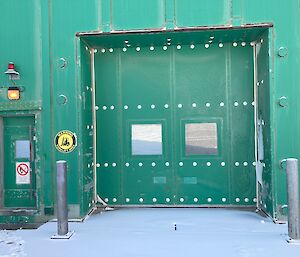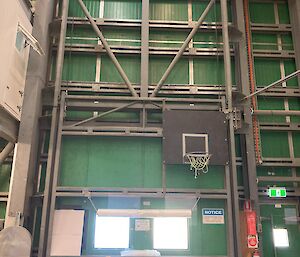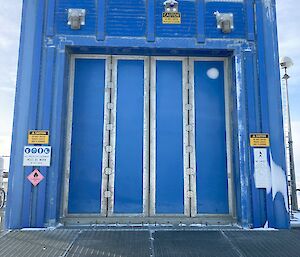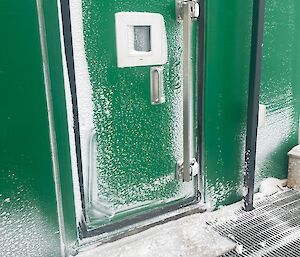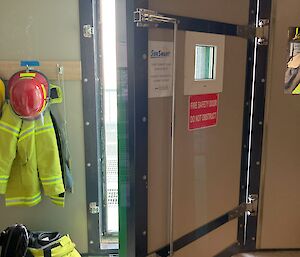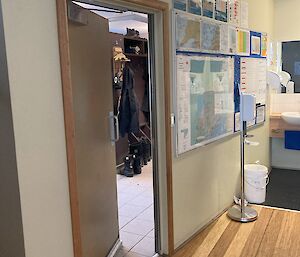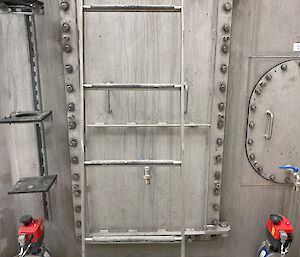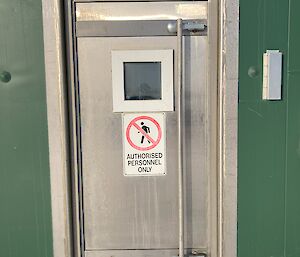The importance of doors in Antarctica is greatly underestimated. Books are written, and films made about famous explorers, icebergs, penguins and seals (except door seals), but what of the humble door. Many are exposed to the harshest conditions Antarctica can serve up, working 24/7 to protect life and property, yet they rarely get a mention. That is, until you become an Antarctic expeditioner.
Leave a door open when its minus thirty outside and blowing a gale and see what happens. Or perhaps slam a door (even gently) late at night or in the early hours of the morning and see how popular you are. Doors can also be the things that give us some sense of privacy in our giant share house.
There is definitely a hierarchy of doors in Antarctica.
The biggest and most expensive doors would have to be the doors on the Emergency Vehicle Shelter (EVS). This building is where we keep our fire truck and ambulance which are both Hägglunds and also our emergency response quadbikes. These doors need to be able to open quickly and easily no matter the weather or how much ice or snow form against them. Technical and powerful, they open and close at the push of a button. From an engineering perspective they are delightful.
Next in line would be the doors on the Greenstore, where we keep most of our supplies and gear. Simple, tall and fast, but scarily noisy. They remind me of the door in the ice wall in Game of Thrones but with push button operation. The slam and lock motion makes you nervous the first few uses.
The Balloon Release building has special doors that only two people get to open. These doors open twice a day to release the weather balloons. They are a very tall bifold double door which are hand operated and sometimes involve a bit of prior snow shovel work.
Several other buildings also have roller doors which all have special Antarctic traits, but word limits mean they must remain a mystery. I know. You want to know about the personnel doors? Most of our main buildings have two doors due to fire and access regulations. The living quarters (LQ) and sleeping and medical quarters (SMQ) are the most used doors on station clocking up over a hundred uses every day. Inside each of these doors is a cold porch which we use as our Antarctic wardrobe and where we transition from hardy expeditioners to semi normal people in normal clothes and a comfortable 19 degrees C.
The slim, meek internal door of the cold porch has an easy life compared to its rugged external colleague. Built like a fridge and with the looks to match, the external doors are about 150mm thick with large strong handles and a window so you can see what’s on the other side. Despite allowing an amazing view this window is very useful for warning you that someone is about to burst through the doorway with a menacing wind behind them. Our doors don’t have doorbells, keys or pet openings (sorry penguins) but they do have built in heating on the frame so that they don’t freeze shut. Because if they did then they would just be a weird wall with a small window.
Inside the LQ and SMQ we have several fire doors which automatically close if we have a fire. Strong and silent they are on guard 24/7, poised to spring into action if needed. Sadly, half the station doesn’t even know they exist. Our personal bedrooms have doors with their own personalities. While they are all closed at night, they vary greatly on when, how much and how open they are during the day, evenings and on the weekend. Most of us share small bathrooms which have doors with locks on them. Thankfully.
Several buildings on station are off limits to people who are not authorised to go in them such as the powerhouse and waste treatment plant. These doors act tough with their big bold signs to scare people off. I always find it amusing that I am now that authorised person and must go into the buildings to do work. Even some of the equipment inside these buildings have special doors.
We also have a mix of trapdoors through floors, escape hatches, external subfloor doors and alarmed freezer doors which are all interesting but sadly just grouped together at the end. I assume they will just be called up as extras when Antarctic doors are finally recognised for what they are and a film is made about them.
Shane. Plumber. Door devotee.

